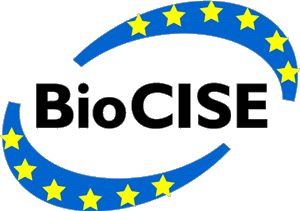 |
Resource Identification for a Biological Collection Information Service in Europe |
 |
Resource Identification for a Biological Collection Information Service in Europe |
[Home | Publications and References | The Survey | Collection catalogue | Software | Standards and Models]
Faculty of Natural Sciences, Szczecin University and BioCISE
Workshop "Access to Biological Collection Information in Poland - a European Perspective"Dziwnówek,"Róza Wiatrów". November 26th-27th, 1999
The high percentage of botanical institutions attending the meeting is not representative for the overall constitution of biological collections in Poland. Reasons for a low attendance from zoological and culture collections were discussed, touching questions of higher complexity of zoological collection information and lower state of databasing in this field or easier maintenance of horticultural as opposed to animal collections. No conclusive reason could be identified, but the observation of the fact agrees with experiences from other national meetings organized by BioCISE.
The use of different grid systems in mapping distributional data was noted, because it may hamper co-ordination attempts between data collections. However, two grids exist on the European scale for animals and plants, and the problem will have to be solved between those two communities rather than on a Polish national scale. The problem is easily overcome if point-locations are used in the original data to represent sighting or collection sites.
The benefits for collection holders in participation in a survey project like BioCISE
include several aspects:
(i) For collections maintained by public funding, allowing public access to the data can
be considered as part of their mission. (ii) Making collections more "visible"
is one of the first steps on the way to better public relations. This publicity advertises
the value of biological collections as "the archives of biodiversity". It thus
serves to justify the maintenance of collections and helps to attract funding, especially
when representing a joint effort of several institutions. (iii) The publication of
catalogues may be a commercial service in itself, e.g. for living collections which sell
cultivated, bred, or cultured organisms (see e.g. the CABRI
project). (iv) Duplication of efforts can be avoided, e.g. in the elaboration of taxonomic
or geographic catalogues. (v) Research efforts are supported: you get back more than you
give.
Applications for funding will have to take the order of "get organized first, then go for funding" rather than the other way round. While chances for the funding of actual data capture projects are not regarded overly optimistic, conditions to acquire funding for establishing information networks are favorable at present.
The participants suggest that a national structure is created and supported that can distribute information about collection holdings in Poland as a part of European and Global biodiversity informatics structures. The participants indicated their willingness to contribute to such a structure, which would perform as a Polish Biological Collection Information System. As a prerequisite it is necessary that the Polish collections participate in the ongoing survey so that they become visible on the Internet. Therefore the participants were asked to fill in the questionnaires distributed in the meeting and available via the BioCISE website (see http://www.bgbm.org/biocise/TheProject/Survey/). As a first step, the participants agreed to the publication of their institutional addresses to provide a list of contacts for Polish biological collection holders. The BioCISE secretariat’s offer was accepted to assist in setting up an initial information page in the World Wide Web, later to be taken over by the University of Szczecin, and to provide the data of Polish institutions (addresses and collection holdings), as far as already available, as a starting stock for a national information system. The minutes of the meeting are to be circulated and will also be distributed to representatives of collections who could not attend the meeting. Barbara Godzik, PAN Kraków, and Andrzej Witkowski, University of Szczecin, offered to arrange a successor meeting for the end of 2000. The setting-up of an email list server as a discussion forum for Polish biological collection holders was suggested, but will be postponed until a host for the list is identified.
[Workshop index | Scope | Introduction to BioCISE | Presentations | Discussion and conclusions | Participants]
The workshop was organized by Prof. Dr. Andrzej Witkowski, Uniwersytet Szczecinski, witkowsk@univ.szczecin.pl
This page last updated March 09, 2000
© BioCISE Secretariat. Email: biocise@, FAX: +49 (30) 841729-55
Address: Botanischer Garten und Botanisches Museum Berlin-Dahlem (BGBM), Freie
Universität Berlin, Königin-Luise-Str. 6-8, D-14195 Berlin, Germany